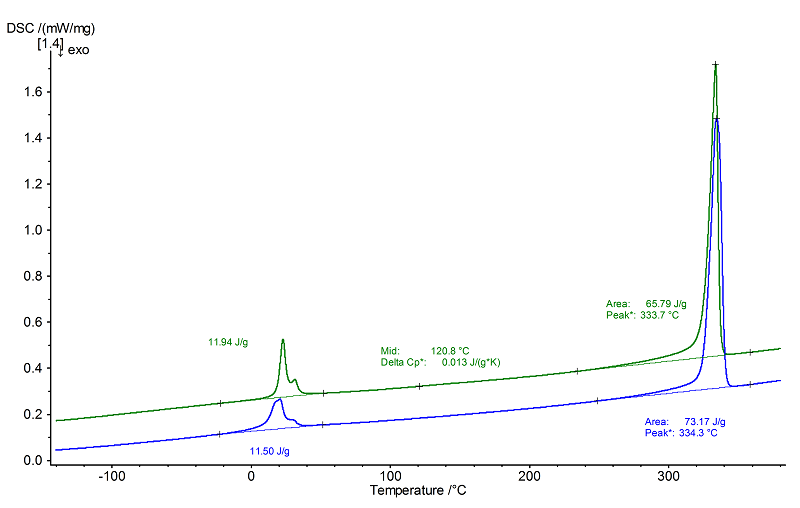PTFE: Polytetrafluoroethylene
- Short Name
- PTFE
- Name
- Polytetrafluoroethylene
- Group
- HTRTP - High-Temperature Resistant Thermoplastics
- General Properties
- Chemical Formula
- Structural Formula
-

Properties
- Glass Transition Temperature
- 120 to 130 °C
- Melting Temperature
- 325 to 335 °C
- Melting Enthalpy
- 82 J/g
- Decomposition Temperature
- 575 to 590 °C
- Young's Modulus
- 400 to 750 MPa
- Coefficient of Linear Thermal Expansion
- 100 to 150 *10¯6/K
- Specific Heat Capacity
- 1.0 J/(g*K)
- Thermal Conductivity
- 0.23 to 0.25 W/(m*K)
- Density
- 2.13 to 2.23 g/cm³
- Morphology
- Semi-crystalline thermoplastic
- General properties
- Good thermal and oxidative stability. High toughness. Very good chemical resistance. Good electrical insulation. Low friction coefficient. High UV resistance
- Processing
- Special techniques for extrusion, compression/sintering for molding, films, components
- Applications
- Chemical plant construction. Food and pharma technology. Medical engineering. Nonstick coating. Sealing technology. High-frequency technology
Internet Links
NETZSCH Measurements
- Instrument
- DSC 204 F1 Phoenix®
- Sample Mass
- 12.80 mg
- Isothermal Phase
- 20 min
- Heating/Colling Rates
- 10 K/min
- Crucible
- Al, pierced
- Atmosphere
- N2 (40 ml/min)

Evaluation
The DSC curve of the PTFE sample exhibits two overlapping peaks around 20°C. The peaks were sharper in the 2nd heating (green) than they were in the 1st heating (blue) with peak temperatures of 23°C and 32°C. A very weak glass transition at approx. 130°C was detected in the 2nd heating. The melting transitions peaked at 334°C in both heatings.
The melting enthalpy with 65 J/g in the 2nd heating (green) is approx. 11% below the melting enthalpy in the 1st heating. This indicates a lower crystallinity in the 2nd heating and is consistent with the somewhat clearer glass transition step, which indicates an increase in amorphous content.
The melting enthalpy with 65 J/g in the 2nd heating (green) is approx. 11% below the melting enthalpy in the 1st heating. This indicates a lower crystallinity in the 2nd heating and is consistent with the somewhat clearer glass transition step, which indicates an increase in amorphous content.